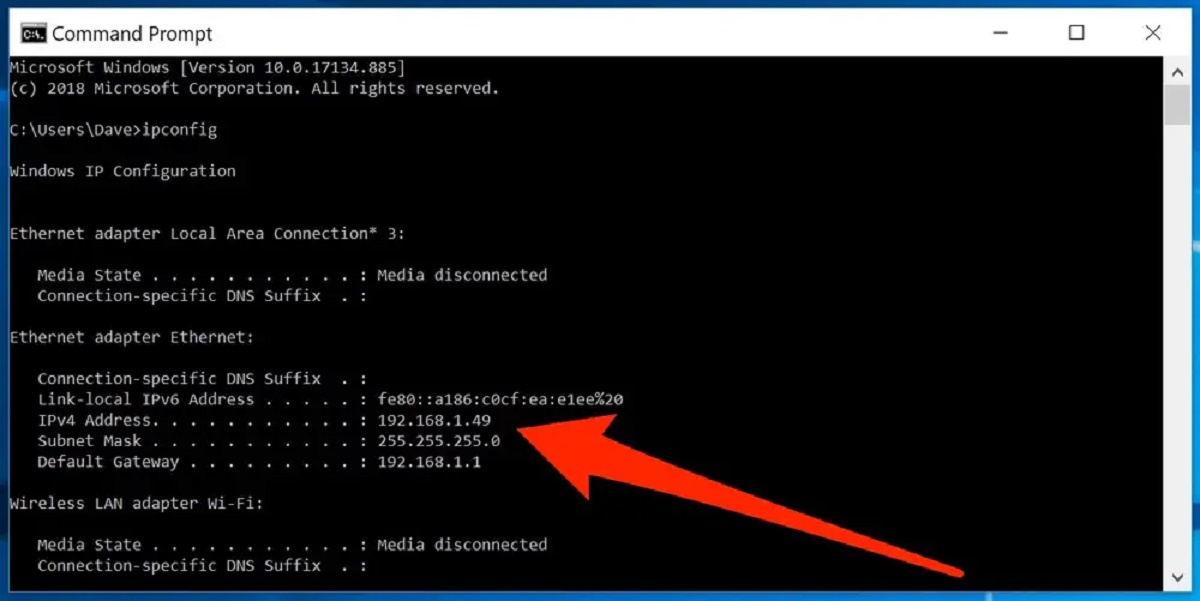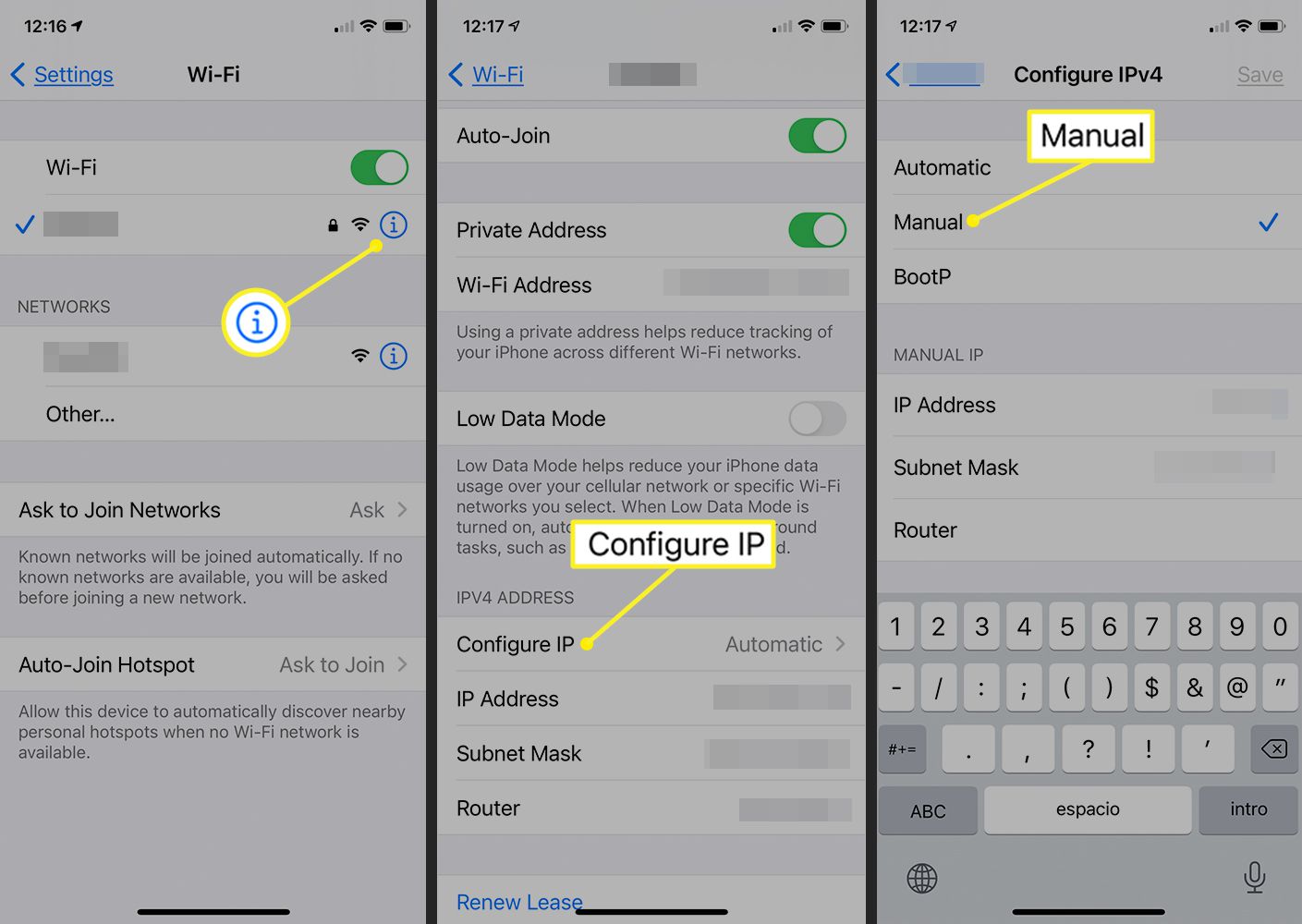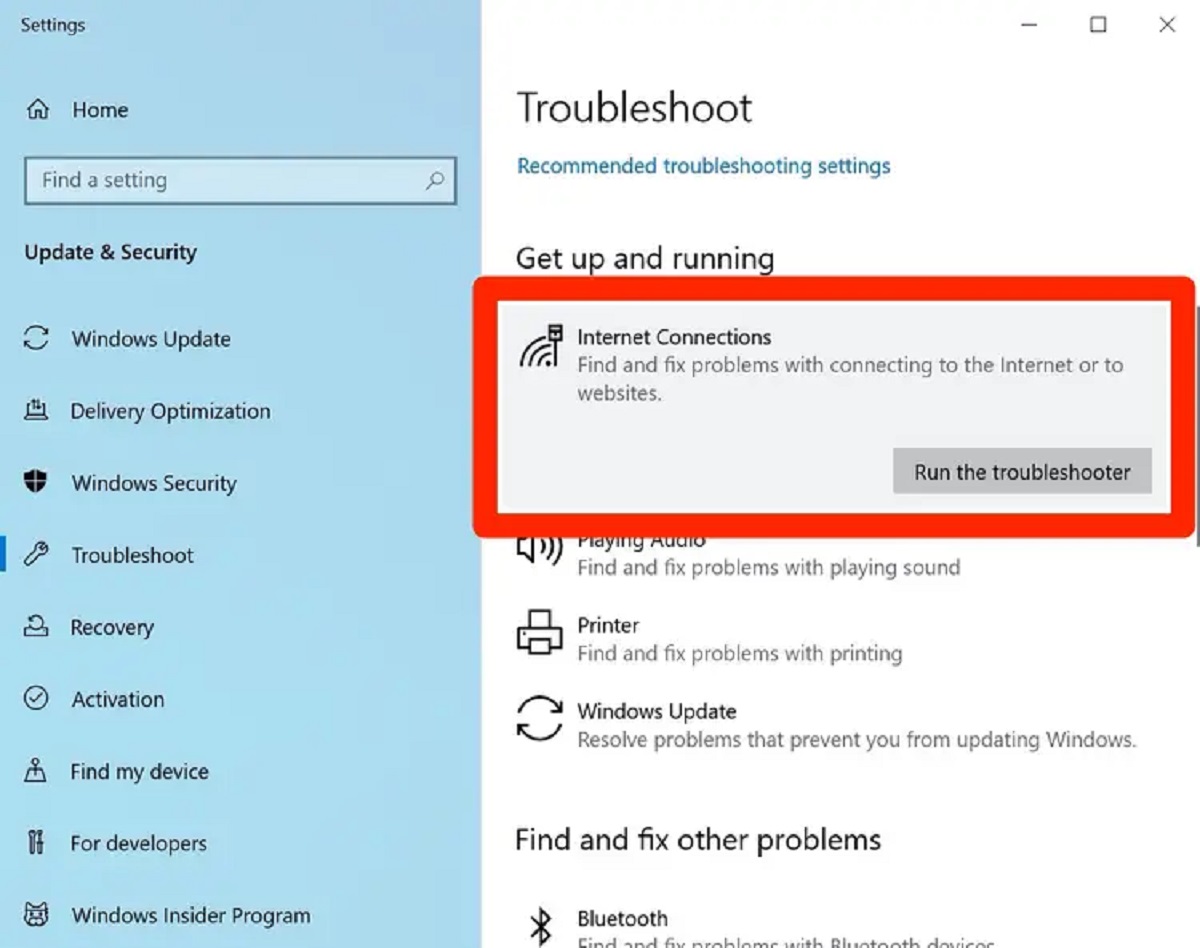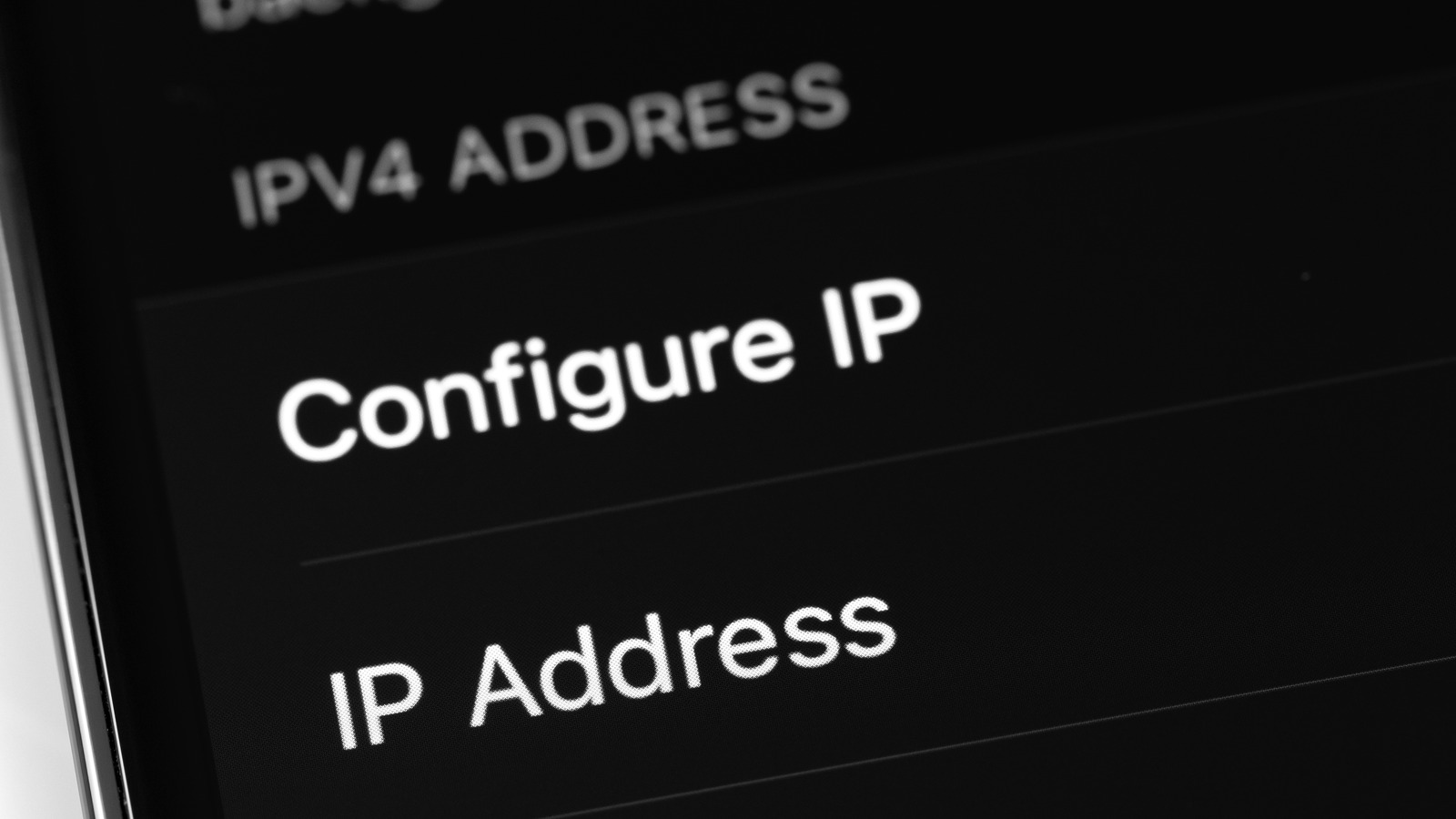Introduction
Welcome to the world of IP addresses! In this digital age, where every device connects to the internet, understanding the concept of IP addresses becomes essential. Whether you’re troubleshooting network issues or setting up a new device, knowing your PC’s IP address is crucial.
But what exactly is an IP address? In simple terms, an IP address is a unique numerical label assigned to your computer or device that allows it to communicate with other devices on a network. It serves as your computer’s digital identification.
In this article, we will guide you through the process of finding your PC’s IP address on various operating systems. Whether you’re using a Windows, Mac, Linux, or Chromebook, we’ve got you covered. We will also provide instructions for finding IP addresses on mobile devices.
Knowing your PC’s IP address can come in handy in a variety of situations. For instance, if you’re experiencing network connectivity issues, network administrators often ask for your IP address to diagnose the problem. Additionally, it can be useful for setting up a remote desktop connection, accessing network resources, or configuring advanced network settings.
Now, let’s dive into the step-by-step guides for finding your PC’s IP address on different platforms. Whether you’re a tech-savvy individual or a beginner, we’ll make sure the instructions are easy to follow and understand. Let’s get started!
What is an IP Address?
An IP address, short for Internet Protocol address, is a unique set of numbers that identifies a device on a network. It serves as the digital address of your computer, allowing it to send and receive data over the internet. Think of it as your computer’s online identity.
IP addresses are essential for communication between devices and the internet. They provide a way for data to be routed from one device to another across networks. Without an IP address, your computer would not be able to connect to the internet or communicate with other devices.
There are two types of IP addresses: IPv4 and IPv6. IPv4 addresses consist of four sets of numbers separated by periods (e.g., 192.168.0.1). This format allows for approximately 4.3 billion unique addresses. However, due to the exponential growth of internet-connected devices, the availability of IPv4 addresses is running out. To overcome this limitation, IPv6 was introduced. IPv6 addresses are longer and consist of eight sets of alphanumeric characters (e.g., 2001:0db8:85a3:0000:0000:8a2e:0370:7334). These new addresses provide an almost unlimited number of unique combinations.
IP addresses can be classified into two categories: public and private. Public IP addresses are assigned by your internet service provider (ISP) and are visible to other devices on the internet. They are unique to your network and allow you to connect to websites, servers, and other internet resources. On the other hand, private IP addresses are assigned to devices within a private network, such as your home or office network. These addresses are not directly accessible from the internet and are used for internal communication.
In addition to identifying devices, IP addresses also play a role in network security. They can be used to track and monitor online activities, block unwanted traffic, or restrict access to certain websites or resources. By knowing the IP address of a device, network administrators can analyze its network traffic and take appropriate action to ensure the security and integrity of the network.
Now that you have a better understanding of what an IP address is, let’s move on to the step-by-step process of finding your PC’s IP address on different operating systems.
How to Find Your PC’s IP Address on Windows
Finding your PC’s IP address on Windows is a simple process that can be done in a few steps. Here’s how:
- Click on the Start menu and type Command Prompt. Press Enter to open the Command Prompt.
- In the Command Prompt window, type ipconfig and press Enter.
- A list of network adapters will appear. Look for the adapter that you’re currently using to connect to the internet (usually labeled as Ethernet or Wi-Fi).
- Under the adapter, you will find the IPv4 Address, which is your PC’s IP address. It will be in the format of four sets of numbers separated by periods (e.g., 192.168.0.1).
Note that if your PC is connected to a router or modem, the IP address shown will be the local IP address assigned by the router, not the public IP address assigned by your ISP. If you need to know your public IP address, you can open a web browser and search for “What is my IP address?” to find out.
Another way to find your IP address is through the Network Connection Status. Follow these steps:
- Click on the Start menu and go to Settings.
- In the Settings window, select Network & Internet.
- Under the Status section, click on Network and Sharing Center.
- In the Network and Sharing Center, click on the active network connection (Ethernet or Wi-Fi).
- A new window will appear. Click on Details.
- Look for the IPv4 Address, which is your PC’s IP address.
Now that you know how to find your PC’s IP address on Windows, you can easily troubleshoot network issues, configure network settings, or access network resources. Remember to jot down your IP address for future reference if needed.
How to Find Your PC’s IP Address on Mac
Finding your PC’s IP address on a Mac is a straightforward process. Here’s how you can do it:
- Click on the Apple menu in the top-left corner of your screen and select System Preferences.
- In the System Preferences window, click on Network.
- You will see a list of network connections on the left-hand side. Select the connection you’re currently using, such as Wi-Fi or Ethernet.
- In the main window, you will find information about your connection. Click on Advanced at the bottom right.
- In the Advanced window, go to the TCP/IP tab.
- Next to “IPv4 Address” or “IPv6 Address,” you will find your PC’s IP address. It will be in the format of four sets of numbers separated by periods (e.g., 192.168.0.1).
If your Mac is connected to a router, the IP address shown will be the local IP address assigned by the router. To find your public IP address, you can open a web browser and search for “What is my IP address?” to get the information.
Apart from the System Preferences method, you can also find your IP address through the Terminal using the following steps:
- Open the Terminal by clicking on the Spotlight Search (magnifying glass icon) in the top-right corner of the screen, typing “Terminal,” and pressing Enter.
- In the Terminal window, type ifconfig and press Enter.
- A list of network interfaces will appear. Look for the interface you’re using, such as en0 for Ethernet or en1 for Wi-Fi. Under that interface, you will find the inet or inet6 address, which represents your PC’s IP address.
Knowing your Mac’s IP address can be useful for troubleshooting network issues, configuring network settings, or accessing network resources. Make sure to take note of your IP address for future reference if necessary.
How to Find Your PC’s IP Address on Linux
Finding your PC’s IP address on a Linux system can be done using various methods. Here are a few ways to accomplish it:
- Method 1: Command Line
- Open a terminal by pressing Ctrl + Alt + T or searching for “Terminal” in the application menu.
- In the terminal, type ifconfig or ip addr show and press Enter.
- A list of network interfaces will be displayed. Look for the interface you’re currently using, such as eth0 for Ethernet or wlan0 for Wi-Fi.
- Under the interface, you will find the inet or inet6 address, which represents your PC’s IP address.
- Method 2: Network Manager GUI
- Click on the network icon in the system tray or taskbar and select Connection Information.
- A window will appear displaying network information. Look for the IPv4 Address or IPv6 Address to find your PC’s IP address.
- Method 3: Network Settings
- Go to the application menu and search for Settings or Network Settings.
- In the network settings, select your network connection (Ethernet or Wi-Fi).
- Under the connection details, you will find the IPv4 Address or IPv6 Address that corresponds to your PC’s IP address.
On Linux, there are many different distributions and desktop environments, so the specific steps may vary slightly. However, the general concept remains the same – accessing network settings or using command-line tools to retrieve network information.
Knowing your PC’s IP address on a Linux system can be valuable for configuring network settings, managing connections, or troubleshooting network-related issues. It is recommended to keep a record of your IP address for future reference if required.
How to Find Your PC’s IP Address on Chromebook
Locating your PC’s IP address on a Chromebook is a simple process. Follow these steps to find it:
- Click on the clock in the bottom-right corner of the screen to open the system tray.
- In the system tray, click on the network icon to see the available Wi-Fi networks.
- At the bottom of the network list, click on Wi-Fi settings.
- A new window will open. Scroll down and click on Advanced at the bottom of the page.
- In the Advanced settings, you will find the IP address listed under the Network section.
The IP address displayed on your Chromebook is the local IP address assigned by your router or network. If you need to find the public IP address assigned by your Internet Service Provider (ISP), you can open a web browser and search for “What is my IP address?” to get the information.
Alternatively, you can find your PC’s IP address by using the built-in Crosh (Chrome OS shell) on your Chromebook. Here’s how:
- Press Ctrl + Alt + T to open a Crosh shell.
- Type ifconfig and press Enter.
- You will see a list of network interfaces. Look for the interface you’re currently using, usually labeled as wlan0 for Wi-Fi or eth0 for Ethernet.
- The IP address associated with the interface will be displayed as inet or inet6. This is your PC’s IP address.
Having knowledge of your Chromebook’s IP address can be helpful for troubleshooting network connectivity issues, configuring advanced network settings, or accessing network resources. Be sure to make a note of your IP address for future reference if needed.
How to Find Your PC’s IP Address on Mobile Devices
Finding your PC’s IP address on mobile devices can vary depending on the operating system. Below, we provide instructions for both Android and iOS devices:
Android Devices:
- Unlock your Android device and open the Settings app.
- Scroll down and tap on Wi-Fi or Network & internet (depending on your device).
- Tap on the currently connected Wi-Fi network.
- In the network settings, you will find the IP address listed along with other network details.
iOS Devices (iPhone, iPad, iPod Touch):
- Unlock your iOS device and open the Settings app.
- Tap on Wi-Fi.
- Tap on the currently connected Wi-Fi network, indicated by a checkmark.
- In the Wi-Fi settings, the IP address will be listed along with other network information.
On both Android and iOS devices, the IP address displayed will be the local IP address assigned by your router or network. If you want to find the public IP address assigned by your Internet Service Provider (ISP), you can open a web browser and search for “What is my IP address?” to obtain the information.
Knowing your mobile device’s IP address can be useful for various purposes, such as troubleshooting network issues, configuring advanced network settings, or accessing network resources from your mobile device. Be sure to take note of your IP address for future reference if necessary.
Troubleshooting Tips: Common Issues with Finding IP Address
While finding the IP address of your PC is generally straightforward, there can be some common issues that you may encounter during the process. Here are a few troubleshooting tips to help you overcome these issues:
- Ensure network connectivity: Before attempting to find your IP address, make sure your device is connected to a network, whether it’s a wired or wireless connection. Check your network settings and confirm that you have an active internet connection.
- Verify correct network adapter: If you have multiple network adapters or virtual network connections on your PC, double-check that you’re looking for the IP address of the correct adapter that is currently in use. Using the wrong adapter may display a different IP address.
- Restart your device: Sometimes, network-related issues can be resolved by simply restarting your PC or device. This can help refresh the network settings and allow your device to reconnect to the network properly.
- Check firewall or antivirus settings: Firewalls or antivirus programs on your PC may have settings that block certain network protocols or prevent your IP address from being displayed. Temporarily disabling these programs or adjusting their settings may allow you to view your IP address.
- Reset your router: If you’re having difficulties finding your IP address, you can try resetting your router. Turn off your router, wait for a few seconds, and then turn it back on. This can help resolve any temporary network issues and provide accurate IP address information.
- Consult network administrator: If you’re part of a larger network or using a device within an organization, reaching out to your network administrator or IT support team can be helpful. They can assist you in finding the IP address or troubleshoot any network-related problems you might be experiencing.
By following these troubleshooting tips, you should be able to overcome most common issues when finding your IP address. Remember, the exact steps may vary depending on your operating system and device, so it’s always a good idea to refer to specific instructions for your particular setup.
Conclusion
In today’s connected world, knowing your PC’s IP address is essential for troubleshooting network issues, configuring network settings, and accessing network resources. Whether you’re using Windows, Mac, Linux, Chromebook, or mobile devices, finding your IP address is a simple process that can be done in a few steps.
Throughout this article, we have provided step-by-step guides for finding IP addresses on various operating systems. We have also shared common troubleshooting tips for overcoming potential issues that you may encounter during the process.
Understanding what an IP address is and how it functions on different devices is crucial for effectively managing and navigating the digital landscape. IP addresses serve as the digital identification of your computer or device, allowing it to communicate and connect with other devices on a network.
Remember to keep in mind that the IP address you find is the local IP address assigned by your router or network. If you require your public IP address assigned by your Internet Service Provider (ISP), you can easily find it by performing a quick web search.
Now that you have the knowledge and instructions to find your PC’s IP address, you can confidently troubleshoot network issues, configure network settings, and access network resources. Knowing your IP address empowers you to navigate the digital world with ease.
By following the steps outlined in this article, you can easily retrieve your PC’s IP address and utilize it for various tasks. Whether for personal or professional use, understanding your IP address is an essential skill in today’s interconnected world.
We hope this article has been helpful in demystifying the process of finding your PC’s IP address. If you have any further questions or need additional assistance, don’t hesitate to reach out to your network administrator or IT support team.

























